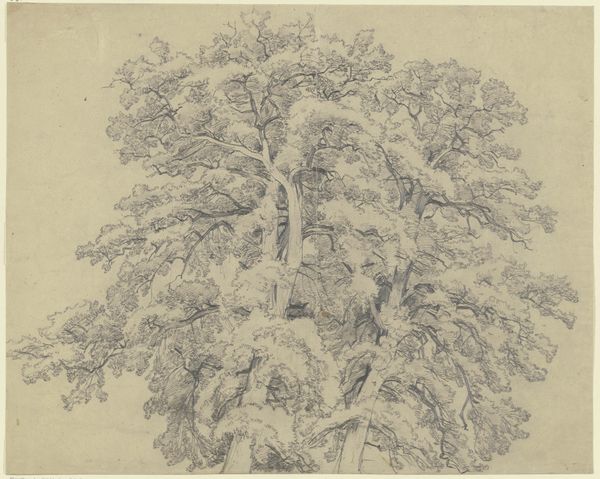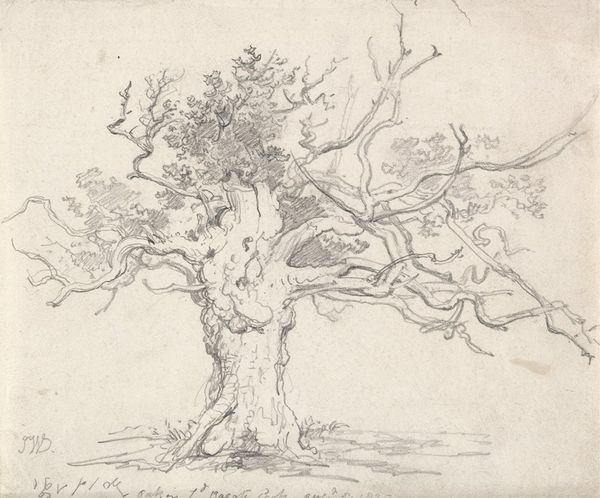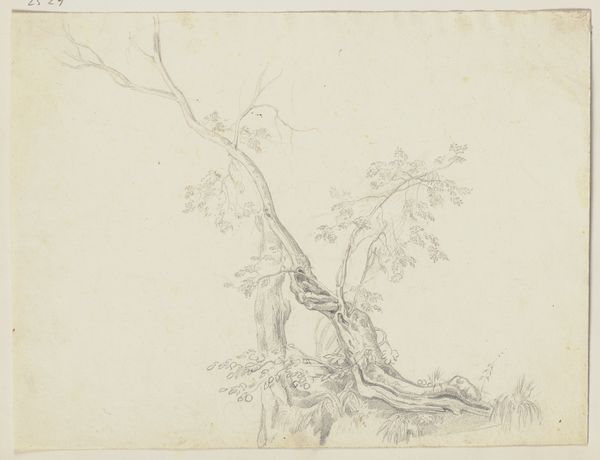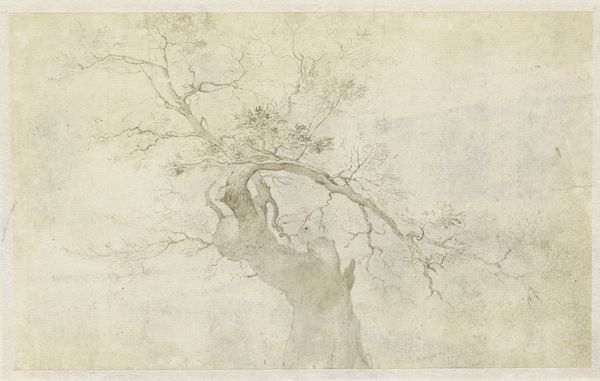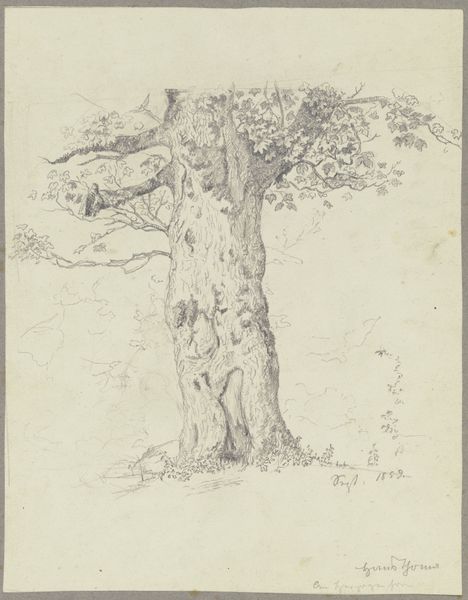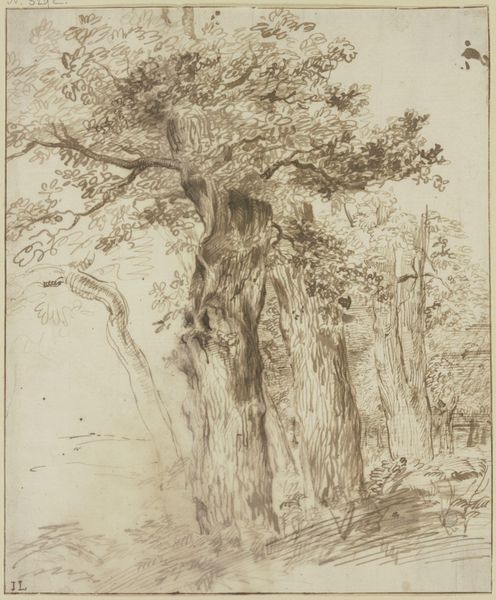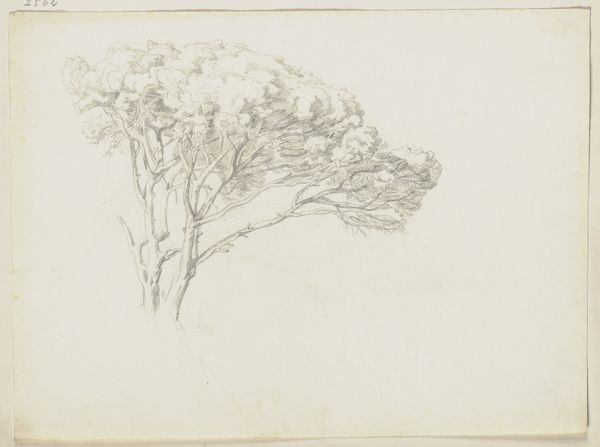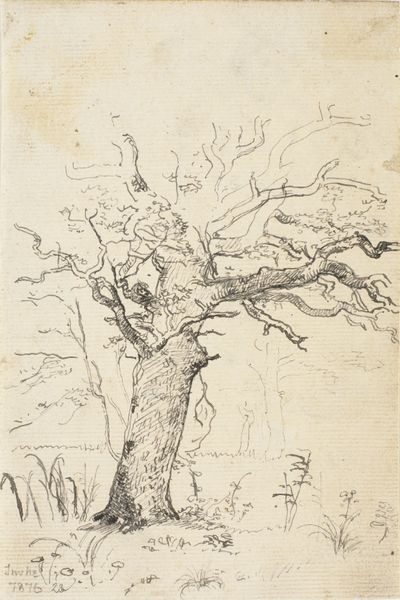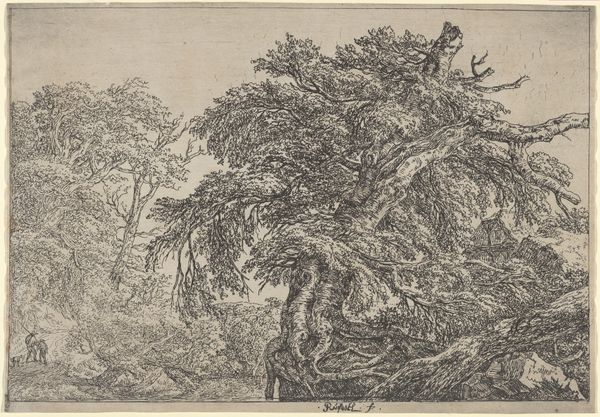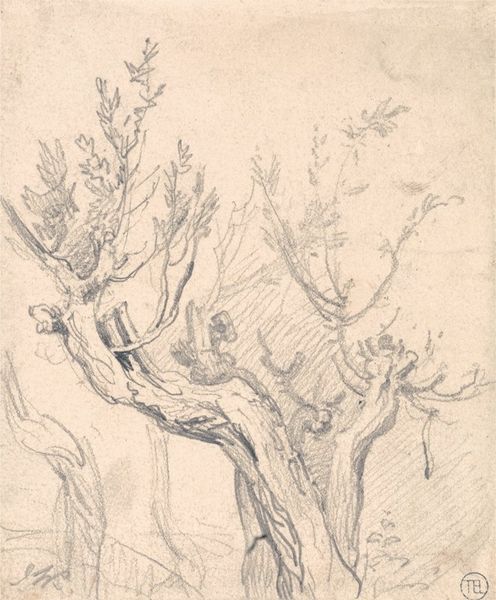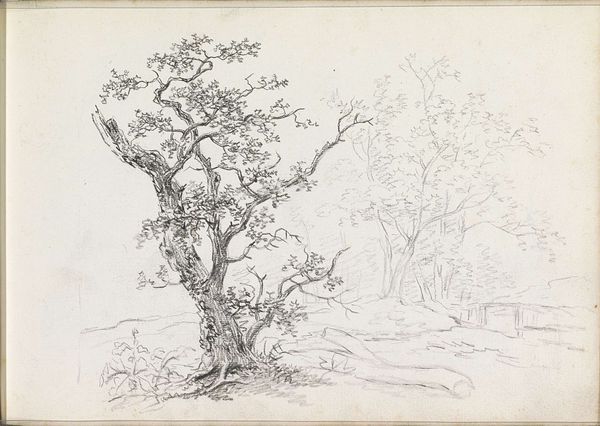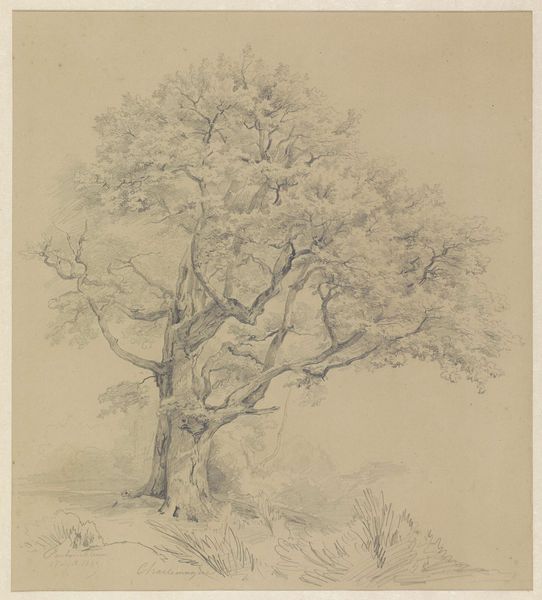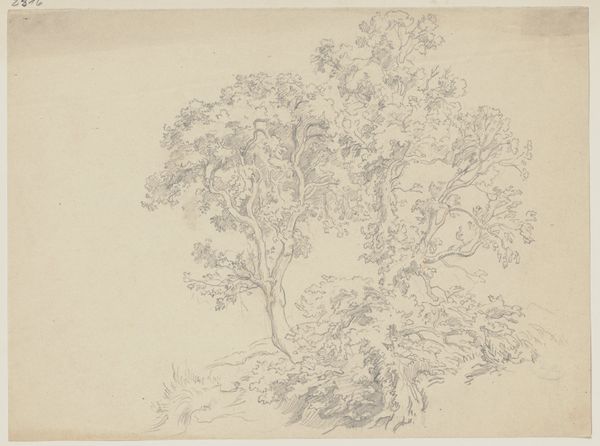
Dimensions: 20 3/16 x 21 1/2 in. (51.31 x 54.61 cm) (outer frame)12 5/8 x 13 1/2 in. (32.07 x 34.29 cm) (image, sheet)
Copyright: Public Domain
Curator: Here we have "A Blasted Tree," a drawing from around 1785 by Benjamin West, rendered in pencil and charcoal. It's currently held here at the Minneapolis Institute of Art. Editor: It’s striking. Such a raw, almost desolate feeling conveyed in what looks like quite delicate strokes. The stark contrast adds to the drama. Curator: Yes, it's quite powerful, isn’t it? West, although born in America, achieved significant success in England and played a pivotal role in shaping the Royal Academy. This drawing showcases his command over capturing the sublime in nature, a common theme during the rise of Romanticism. Editor: Sublime, certainly. But I am struck by the labor that went into creating this level of detail. You can almost feel the artist handling the materials, coaxing the texture of the bark from the pencil. It challenges this idea of high art, bringing it back to a practical process, you know, just paper, pencil, charcoal and hours of skilled labor. Curator: True. And, in that labor, perhaps West sought to capture a moment of environmental vulnerability. The blasted tree becomes a symbol. Was this ruin due to natural causes or the encroaching impact of civilization? It reflects larger anxieties present during that period. It’s a reminder of both nature's resilience and fragility. Editor: A symbol indeed, a testament to the power of natural forms depicted using raw, earth-derived materials. This image allows viewers a deeper respect for these common tools and how they construct our vision of reality. Curator: Absolutely. "A Blasted Tree" is much more than a study of a tree; it encapsulates social anxieties, aesthetic ideals and material presence within a quickly changing world. Editor: Precisely, a confluence of labor, nature, and societal reflection. Curator: A compelling testament. Editor: Indeed.
Comments
minneapolisinstituteofart almost 2 years ago
⋮
Born in colonial Pennsylvania, Benjamin West enjoyed a meteoric career in England, where he became a court painter to King George III and longtime president of the Royal Academy. Though primarily known as a painter of grand historical scenes, West enjoyed sketching outdoors during his free time. His close relationship with the king gave him access to the parklands around Windsor Castle, where he marveled at ancient trees that survived with just a few scant branches of leaves projecting from their twisted, weather-beaten stumps. In his fascination with the forces of nature—both its destructive power and the will to survive—West is regarded as a forerunner of Romantic artists of the next generation.
Join the conversation
Join millions of artists and users on Artera today and experience the ultimate creative platform.
